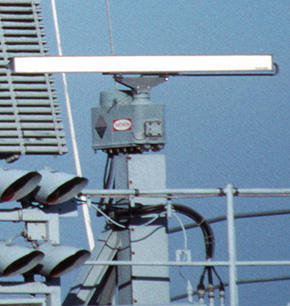Spectrum Sharing Innovation Test-Bed
The National Telecommunications and Information Administration (NTIA), in coordination with the Federal Communications Commission (FCC) and the Federal agencies, established a Spectrum Sharing Innovation Test-Bed (Test-Bed) pilot program to examine the feasibility of increased sharing between Federal and non-Federal users. This pilot program is an opportunity for the Federal agencies to work cooperatively with industry, researchers, and academia to objectively examine new technologies that can improve management of the nation's airwaves.
Test-Bed Pilot Program
The Test-Bed Pilot Program will evaluate the ability of Dynamic Spectrum Access (DSA) devices employing spectrum sensing and/or geo-location techniques to share spectrum with land mobile radio systems operating in the 410-420 MHz Federal band and 470-512 MHz non-Federal band. The Test-Bed Pilot Program will be performed in three phases:
1) Equipment Characterization. Equipment employing DSA techniques will be sent to the NTIA Institute for Telecommunication Sciences in Boulder, Colorado and characterization measurements of the DSA capabilities in response to simulated environmental signals will be performed.
2) Evaluation of Capabilities. After successful completion of Phase 1, the DSA capabilities of the equipment in the geographic area of the Test-Bed will be evaluated.
3) Field Operation Evaluation. After successful completion of Phase 2, the DSA equipment will be permitted to transmit in an actual radio frequency signal environment. An automatic signal logging capability will be used during the operation of the Test-Bed to help resolve interference events if they occur. A point-of-contact will also be established to stop Test-Bed operations if interference is reported
Test-Bed Participants:
- Adapt4 LLC
- Adaptrum Inc.
- BAE Systems
- Shared Spectrum Company
Related content
Remarks of Assistant Secretary Strickling at the International Symposium on Advanced Radio Technologies (ISART 2015)
Remarks of Lawrence E. Strickling
Assistant Secretary of Commerce for Communications and Information
International Symposium on Advanced Radio Technologies (ISART 2015)
Boulder, CO
May 13, 2015
—As Prepared for Delivery—
On behalf of the Center for Advanced Communications, a collaboration between the National Telecommunications and Information Administration (NTIA) and the National Institute of Standards and Technology (NIST), I would like to welcome you to ISART 2015.
Bringing Spectrum Sharing to a "Model City"
As we explore a bold new world of sharing spectrum across government and commercial users, NTIA is continuing the conversation about how to make this vision a reality.
NTIA and the Federal Communications this week held a two-day workshop focused on the Model City initiative, which would establish a pilot program in a major U.S. city or cities that will serve as a test bed to evaluate and demonstrate spectrum-sharing technology in a real-world urban environment. The project would be a public-private partnership launched with the support of NTIA, which manages federal uses of wireless spectrum, and the FCC, which regulates commercial use of the airwaves.
It has been nearly three years since the President’s Council of Advisors on Science and Technology (PCAST) issued a groundbreaking report laying out a bold new vision to make the most efficient use of government-held wireless spectrum and realize its full potential to spur economic growth, drive innovation and fuel the mobile broadband revolution.
Technical Studies to Support Examination of Sharing Options in the 2900-3100 MHz Band
The Federal Government uses the 2900 - 3100 MHz band of spectrum for operating various types of radar systems that are used for safe and reliable maritime navigation and accurate weather monitoring. This band is one of the bands NTIA is considering in its effort to fulfill the President’s goal of identifying 500 megahertz of spectrum for commercial wireless broadband by 2020. Three reports released today describe a multi-year research effort performed by NTIA’s Institute for Telecommunication Sciences (ITS) and funded by the United States Coast Guard providing technical information that can be used to examine different sharing options between marine radar systems operating in the 2900 - 3100 MHz band and commercial wireless broadband systems.

Marine radar slotted array antenna (white bar) mounted on motor which spins it.
